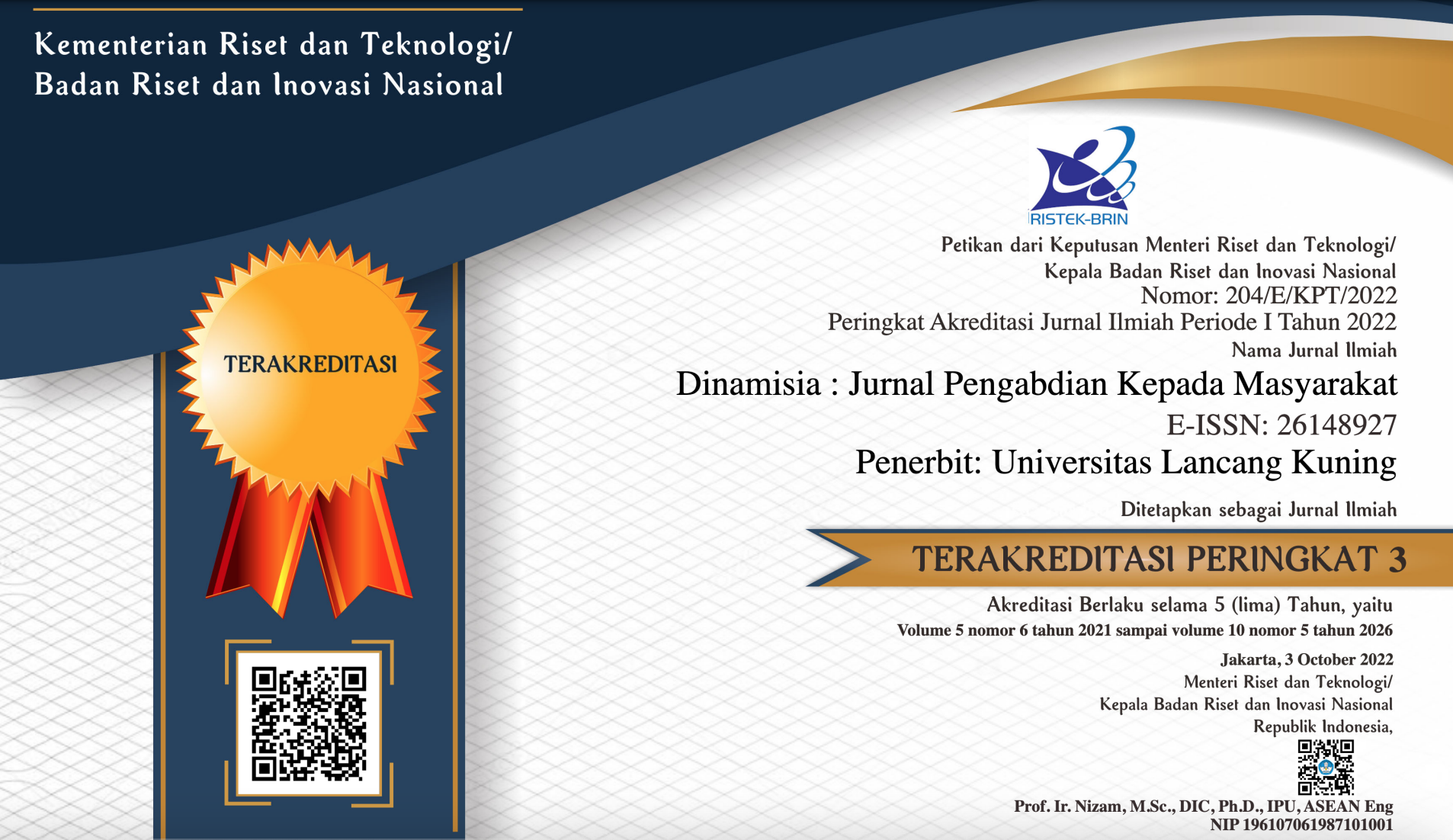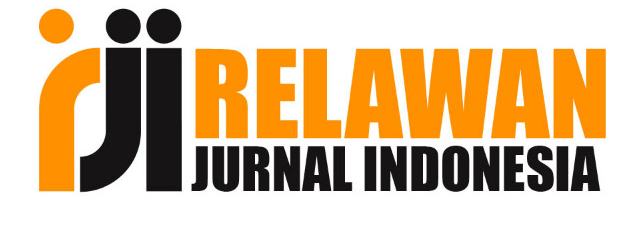Penerapan Computational Thinking Pada Materi Percabangan Dan Perulangan Untuk Menyelesaikan Permasalahan Sman5 Pekanbaru
Abstract
The thought process needed to formulate problems and solutions so that these solutions can become effective information processing agents in solving problems is called computational thinking (CT). The process of implementing learning using the CT approach is related to those provided by Google for Education, namely abstraction, algorithm design, decomposition, and pattern recognition. CT is a term that refers to the main ideas and concepts in the fields of informatics and computer science, so the proposed Community Service (PkM) activity this time will introduce looping and branching materials. Learning is taught and presented in a fun way, and then activities are carried out that discuss the problems that exist around the students of SMAN 5 Pekanbaru. It is hoped that by injecting the CT concept it can foster students' creativity, foster a culture of information, algorithms, and computational thinking, and involve students in utilizing information technology, computers, and applications from an early age
Downloads
References
Brennan, M. A., & Israel, G. D. (2008). The power of community. Community Development, 39(1), 82-97.
Mukhtar, H., Firdaus, R., Putri, D. A., Wenando, F. A., Unik, M., Amien, J. A., Fuad, E., & soni, S. (2022). Pelatihan Penggunaan Aplikasi Zoom Untuk Pembelajaran Daring di MTs Muhammadiyah 02 Pekanbaru. Dinamisia : Jurnal Pengabdian Kepada Masyarakat, 6(2), 294-304. https://doi.org/10.31849/dinamisia.v6i2.6283
Yuniawatika, Y., & Ibrahim Sani Ali Manggala. (2022). Peningkatan Keterampilan ICT melalui Pelatihan Pembuatan Kuis Online. Dinamisia : Jurnal Pengabdian Kepada Masyarakat, 6(2), 327-336. https://doi.org/10.31849/dinamisia.v6i2.8382
Kidd, T., Lonnie , R., & Morris, J. (2017). Handbook of Research on Instructional Systems and Educational Technology. United States of America: IGI Global.
Wing, J. M. (2006). Computational Thinking: What and Why? In Communications of the ACM (pp. 33-35). New York, NY, United States: Association for Computing Machinery.
Bebras. (n.d.). Retrieved from https://bebras.or.id/v3/
Computational thinking. (n.d.). Retrieved from http://www.bbc.co.uk/bitesize/topics/z7tp34j
Pentingnya Mengajarkan Computational Thinking Di Sekolah Indonesia. (n.d.). Retrieved from Pentingnya Mengajarkan Computational Thinking Di Sekolah Indonesia: https://edukasi101.com/pentingnya-mengajarkan-computational-thinking-di-sekolah-indonesia/
REFO. (2022, Februari 8). Apa Itu Computational Thinking? Retrieved from Apa Itu Computational Thinking?: https://www.refoindonesia.com/apa-itu-computational-thinking/
surya, i., sari, r. p., henim, s. r., & hanifah, p. (n.d.). Tingkatkan Peran Siswa dalam Menyelesaikan Permasalahan. Retrieved from Tingkatkan Peran Siswa dalam Menyelesaikan Permasalahan: https://pcr.ac.id/read/37877/tingkatkan-peran-siswa-dalam-menyelesaikan-permasalahan-dosen-pcr-berikan-pelatihan-dan-implementasi-computional-thinking-kepada-sman-5-pekanbaru



















